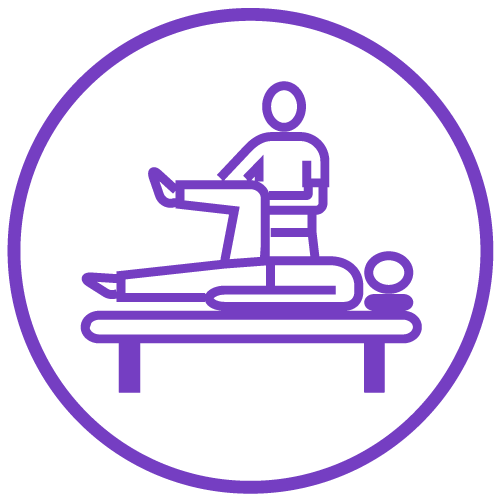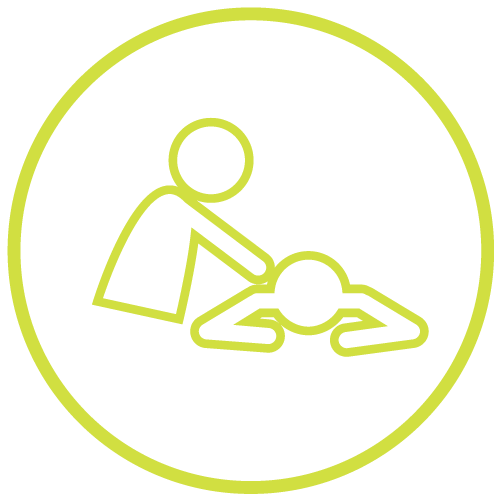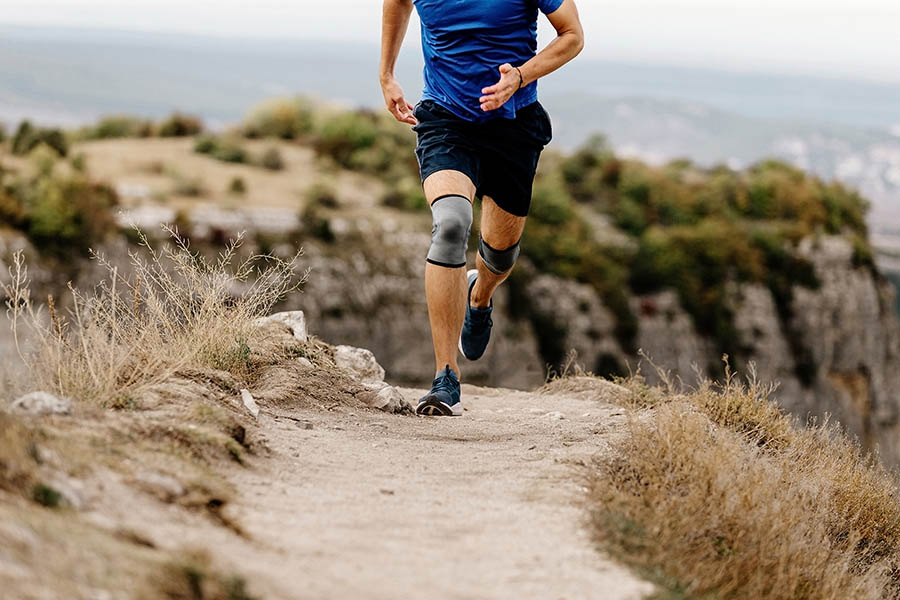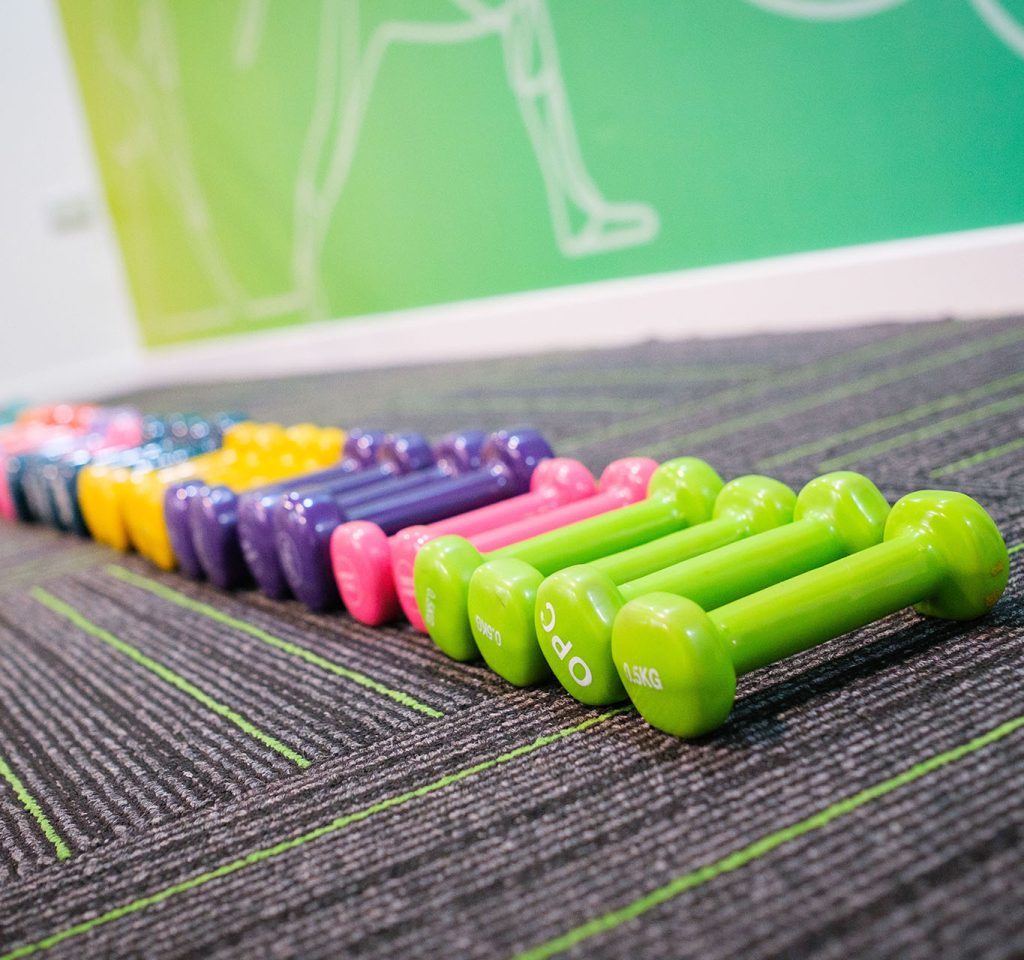What is an Ankle Sprain?
An ankle sprain, also known as a twisted ankle, rolled ankle or ankle ligament injury is an injury to any of the main ligaments at the ankle and represents the second most frequently injured part of the body. The main ligaments/connective tissue susceptible to injury at the ankle include:
- Anterior talofibular ligament (ATFL)
- Calcaneofibular ligament (CFL)
- Posterior talofibular ligament (PTFL)
- Deltoid ligament
- Syndesmosis
A sprain occurs when the ligament is stretched beyond its normal capacity and often results in injury or tearing of the tissue. Once injured, depending on the severity of the damage present, the ankle may rapidly become swollen, bruised and painful, with the placement of weight on the injured ankle quite uncomfortable.
Ankle sprain categorisation is largely determined by the location of ligamentous injury at the ankle and is classified as:
- Low ankle sprain
- Lateral ankle sprain (outside of the ankle) involving ATFL, CFL and/or PTFL (results from an inversion injury where the foot rolls inward or twists) – 70-85% of cases
- Medial ankle sprain (inside of the ankle) involving the deltoid ligament, often associated with fibular (leg bone) fracture (results from an eversion injury where the foot rolls outward or twists) – 5-10% of cases
- High ankle sprain (syndesmosis injury) – 5-10% of cases
Eversion injuries, although rare, are generally more severe and create greater ankle instability than inversion injuries.
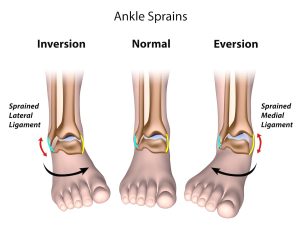
What causes it?
Ankle sprains usually result from an injury that involves the foot rolling inward (most common), outward, or twisting. The most common causes of this are:
- Unstable / irregular surface (walking / running)
- Poor footwear
- Forced trauma, such as in high impact sports
- Ankle joint instability
- Awkward landing of the foot
- More susceptible if you’ve had an ankle sprain in the past
Common symptoms of an Ankle Sprain:
The symptoms give us significant clues regarding the severity and type of ankle sprain.
- Grade 1 sprain (mild – ligament stretch)
- Mild swelling and tenderness
- No joint instability
- Weight-bearing is tolerable
- Ambulation with minimal discomfort
- Grade 2 sprain (moderate – incomplete ligament tear)
- Swelling, bruising
- Moderate pain, tenderness
- Mild to moderate joint instability
- Restricted ankle joint range of motion
- Altered gait due to pain, loading intolerance and poor propulsive strength
- Grade 3 (complete ligament tear)
- Severe swelling, bruising
- Severe pain, tenderness
- Significant joint instability
- Significant loss of movement / function
- Requires walking aids to ambulate – unable to weight bear on affected foot
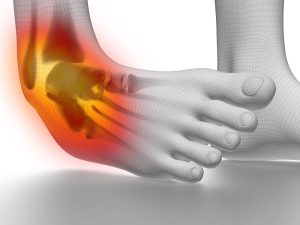
How long does it take to recover?
Recovery of an ankle sprain can take up to eight weeks. It is important to seek advice from a physiotherapist as soon as possible following an ankle sprain as failure to receive effective guidance promptly following a sprain may result in significantly prolonged recovery and an increased predisposition to recurrence.
Physiotherapy is the best treatment.
The ligaments of the ankle are essential for the provision of mechanical stability, proprioceptive information (balance) and direct motion for the joint. It is important to get them working as soon as possible post-injury and the use of rest, ice, compression and elevation for the first 48 hours is ideal management. X-rays, should they be required, are often better to be obtained after the initial 48 hours as swelling at the ankle may not provide accurate imaging of the ankle and nearby structures.
Physiotherapy will guide the patient through their rehabilitation, restoring function and helping to reduce pain as able. Those who are compliant with the exercises provided will find that they recover much faster!
If you’ve sprained your ankle and want help recovering, please give us a call and we’ll be able to provide the correct treatment option for you.


